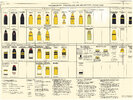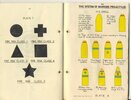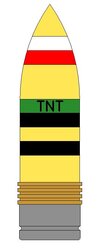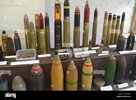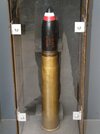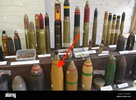Norman,
The Broad arrow within an oval, is, as you state pertinent to the steel, it is a 'material transfer stamp' and found on forged projectiles. If the steel bar stock passes the various test criteria it is stamped as such and any projectiles made from that specific piece of steel are stamped to show the source material had passed the tests.
The number following the A is probably the lot number of the heat treatment.
TimG
Thanks Tim. I have the stamp listed as GAS 23 [which presumably stands for Gun Ammunition Shell stamp No 23] in a WW1 Ministry of Munitions document. Other series of stamps include GA (Gun Ammunition), GAC (Cartridges) and GAF (Fuzes). You are probably familiar with this document. Do you know if there is a WW2 equivalent?
Krt7,92 - I am glad to see that you are not going to repaint the shell. It is very likely that the shell body is stamped. You might try laying a plain sheet of paper on the body and lightly rubbing a soft pencil over it (as in "brass rubbing").
Krt7,92 - I am glad to see that you are not going to repaint the shell. It is very likely that the shell body is stamped. You might try laying a plain sheet of paper on the body and lightly rubbing a soft pencil over it (as in "brass rubbing").

